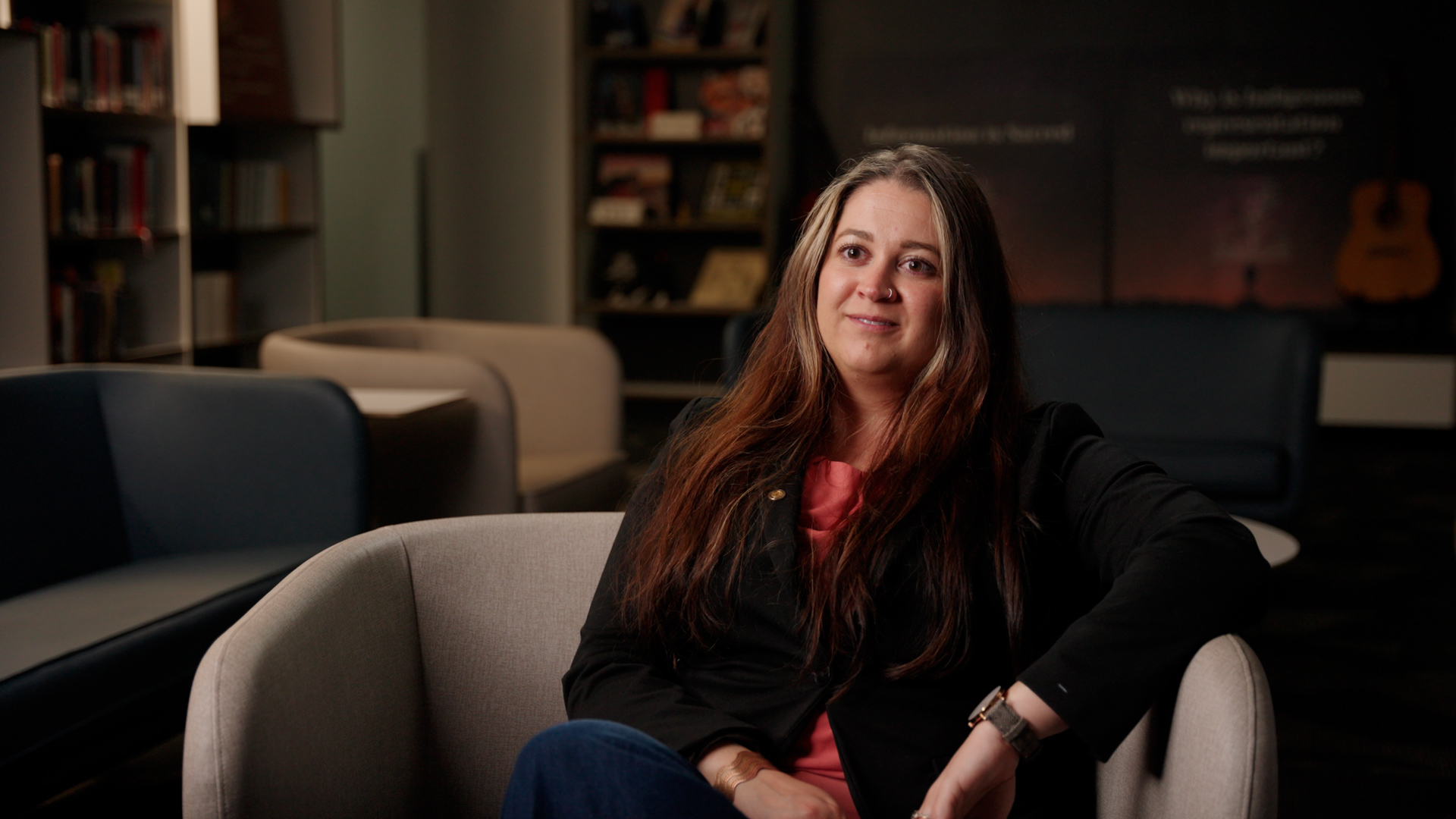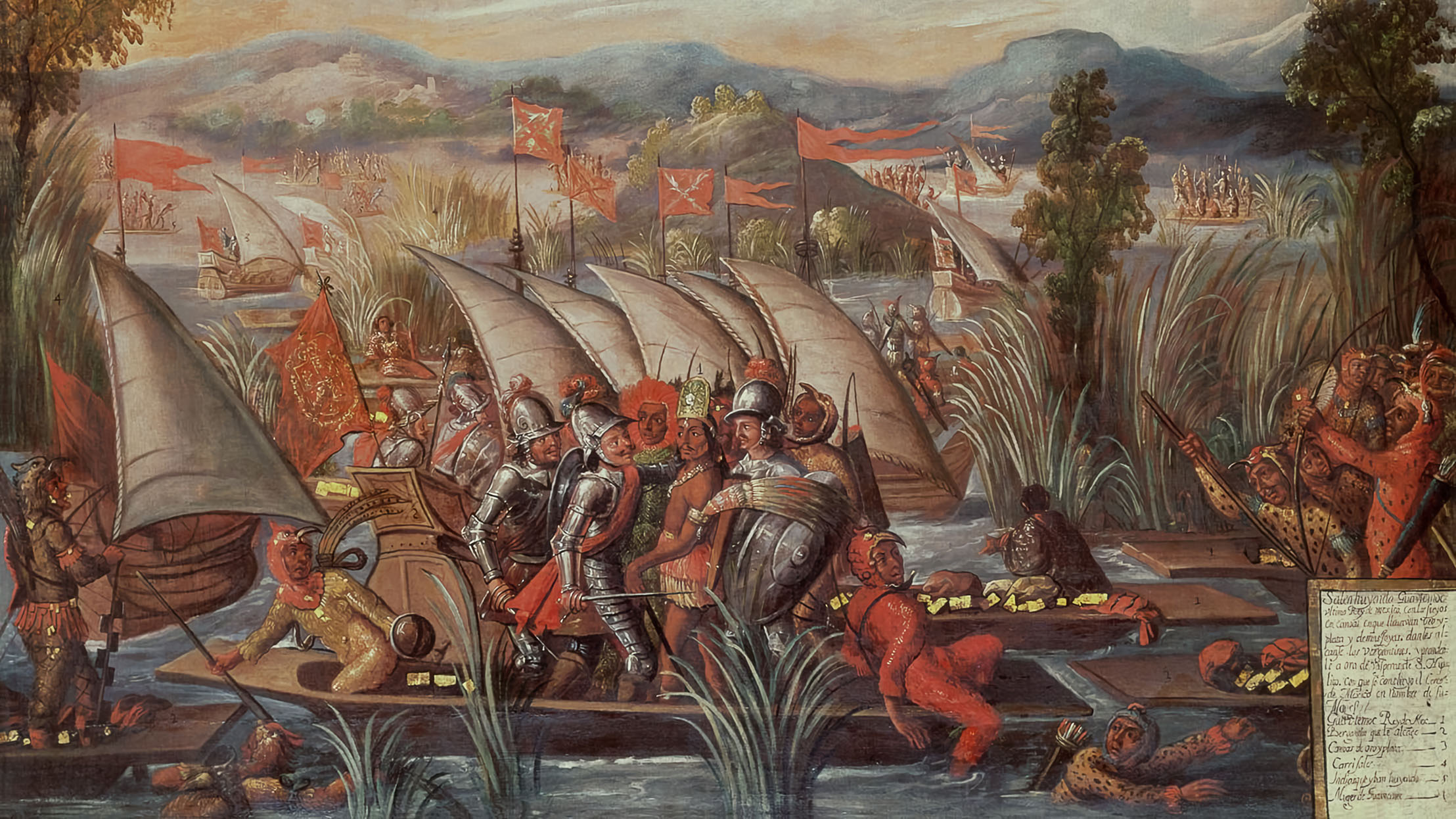Andrews, Tarren. "Indigenous women and the law in the Anglophone Empire." Throughlines. www.throughlines.org/suite-content/rindigenous-women-and-the-law-in-the-anglophone-empire. [Date accessed].

Premodern texts as vehicles for critical discussions
As we medievalists and early modernists continue to find ourselves in departments defined outside of temporal constraints, many of us end up regularly teaching courses that are not explicitly “premodern.” This annotated syllabus models one way to use early medieval materials to contextualize and illuminate the braided relationship between the past and the present through the structures of language and law.
Course description
This seminar examines the historical and ongoing entanglement of Indigenous women and Anglophone legal systems, moving from early medieval England to the Pacific and North America. We begin with Old English legal codes that governed women’s rights and social positions in early medieval English societies and question how these texts established gendered legal frameworks that later informed colonial legal structures.
As we move geographically and temporally, we trace the ways British and American legal systems constructed Indigenous women as subjects of empire, shaping their legal status, kinship structures, and sovereignty. A central theme of the course is Indigenous women's resistance to settler legal impositions. Through case studies—including early colonial legal battles, the forced removals of women and children, and contemporary struggles for justice and land rights—we will examine how Indigenous women have asserted legal and extralegal agency in the face of colonial authority.
Our readings include historical legal texts, Indigenous feminist scholarship, primary documents such as treaties and court cases, secondary sources and commentaries, novels, documentaries, films, and podcasts.
Primary readings and films
- Old English Laws of Æthelberht, Hloþere and Eadric, Wihtred, Alfred, and Edgar.
- Oliver, Lisi. The Beginnings of English Law (University of Toronto Press, 2002).
- Jurasinski, Stephan and Lisi Oliver, eds. The Laws of Alfred: The Domboc and the Making of Anglo-Saxon Law (Cambridge University Press, 2021).
- Robertson, Agnes J., ed. and trans. The Laws of the Kings of England from Edmund to Henry I (Cambridge University Press, 1925).
- The Wanderer, The Seafarer, Wulf and Eadwacer, and The Wife’s Lament. Ophelia Hostetter’s Old English Poetry Project https://oldenglishpoetry.camden.rutgers.edu
- The Indian Act (Canada, 1876), Section 3 “Terms.” https://nctr.ca/wp-content/uploads/2021/04/1876_Indian_Act_Reduced_Size.pdf
- The Dawes Act (United States, 1887). https://www.archives.gov/milestone-documents/dawes-act
- Treaty of Waitangi (Aotearoa, New Zealand, 1840). https://unimelb.libguides.com/c.php?g=925155&p=6681291
- Erdrich, Louise. The Round House (Harper, 2013).
- Long Solider, Layli. WHEREAS: Poems (Graywolf Press, 2017).
- Club Native (dir. Tracey Deer, 2008).
- Killers of the Flower Moon (dir. Martin Scorsese, 2023).
- Mary Two-Axe Earley: I am Indian Again (dir. Courtney Montour, 2021).
Selected secondary readings and sources
- Rabin, Andrew. “Law and Justice,” The Handbook of Anglo-Saxon Studies (Wiley Blackwell, 2012): 85-98.
- Scheck, Helene and Virginia Blanton, “Women,” The Handbook of Anglo-Saxon Studies (Wiley Blackwell, 2012): 265-279.
- Johnson, Amanda Louise. “Thomas Jefferson’s Anglo-Saxon Genesis,” Modern Philology 114.3 (2017): 680-701.
- Modarelli, Michael. The Transatlantic Geneaology of American Anglo-Saxonism (Routledge, 2018). Selections.
- Young, Iris Marion. “Gender as Seriality: Thinking about Women as a Social Collective,” Signs 19.3 (1994): 713-738.
- Suzack, Cheryl. “Emotion Before the Law,” Indigenous Women and Feminism: Politics, Activism, Culture (University of British Columbia Press, 2010): 126-151.
- Simpson, Audra. Mohawk Interruptus: Political Life Across the Borders of Settler States (Duke University Press, 2014). Selections.
- Piatote, Beth. Domestic Subjects: Gender, Citizenship, and the Law in Native American Literature (Yale University Press, 2017). Selections.
- Nagle, Rebecca. By The Fire We Carry (Harper, 2024). Selections.
- Alternatively, listen to selected episodes of the podcast This Land season 2.
- Goeman, Mishuana. Native Women Mapping Our Nations (University of Minnesota, 2013). Selections.
- Warrior, Robert. “The Missing Politics of Scorsese’s Killers of the Flower Moon,” New Lines Magazine. https://newlinesmag.com/essays/the-missing-politics-of-scorseses-killers-of-the-flower-moon/
- Pihama, Leonie. “Mana Wahine: Decolonising Gender in Aotearoa,” Australian Feminist Studies 35.106: 351-365.
- Simmonds, Naomi. “Mana Wahine: Decolonising Politics, ”Women’s Studies Journal 25.2 (2011): 11-25.
- Nauman, Qasim. “Why New Zealand’s Maori Lawmakers Protested with a Traditional Dance,” The New York Times, Nov. 15, 2024. https://www.nytimes.com/2024/11/15/world/asia/new-zealand-parliament-maori-haka.html
- Wall Kimmerer, Robin. Braiding Sweetgrass: Indigenous Wisdom, Scientific Knowledge and the Teaching of Plants (Milkweed, 2015). Selections.
- Betasamosake Simpson, Leanne. As We Have Always Done: Indigenous Freedom through Radical Resistance (University of Minnesota Press, 2020). Selections.
- Harjo, Laura. Spiral to the Stars: Myskoke Tools of Futurity (University of Arizona Press, 2019). Selections.
Unit 1: The shaping of law, language, and culture
I begin with Old English laws because their short, often repetitive clauses offer an accessible entry point into the course’s central concern: the role of language in constructing legal and cultural norms. These texts open a focused conversation about how law functions as a linguistic technology, building categories of personhood and belonging. From there, we shift to early English poems that expand this discussion to include cultural narratives of gender. The poems allow us to consider the contrasting roles available to men and women in the early English world and to examine how literary forms reinforce or trouble legal structures.
To support students—especially those new to medieval studies—I pair primary texts with short, accessible readings from sources like The Handbook of Anglo-Saxon Studies and editions by scholars such as Lisi Oliver. These secondary materials help clarify how key concepts like “law” and “gender” are historically contingent and remain in flux, even within the early medieval period. Pairing legal codes with poetic texts emphasizes a core throughline of the course: law, language, and culture shape one another. Secondary readings from Stacey Klein and others widen our view of the early English world, inviting students to trace how legal discourses encode specific cultural values. In a short lecture that concludes this unit, I highlight how early English laws construct gendered and classed categories of personhood that become portable archetypes within the Anglophone imperial imagination.
Unit 2: Modern iterations
Transitioning into the modern period, we turn to Amanda Louise Johnson’s “Thomas Jefferson’s Anglo-Saxon Genesis” and selections from Michael Modarelli’s The Transatlantic Genealogy of American Anglo-Saxonism. These readings show how architects of the U.S. legal system explicitly drew from early English legal models to imagine a settler state. This framing helps students understand why we next place the Indian Act (Canada) and Dawes Act (U.S.) at the center of our study—because these statutes deploy inherited legal categories like “man” and “woman” to execute programs of land theft and Indigenous elimination.
To ground students in the vocabulary necessary to analyze this material, I suggest that students who have not yet done so read Patrick Wolfe’s “Settler Colonialism and the Elimination of the Native” alongside the required reading of Mishuana Goeman’s (Tonawanda Band of Seneca) “Land as Life: Unsettling the Logics of Containment.” These texts provide a shared foundation for discussing settler colonialism and Indigenous conceptions of land. I also incorporate films and readings that center the lived experiences of Indigenous women. In Canada, this includes explorations of state-recognized belonging and gendered violence, particularly through the lens of Tracey Deer’s and Courtney Montour’s films and the crisis of Missing and Murdered Indigenous Peoples endemic to North America more broadly.
Readings and media by Audra Simpson (Mohawk), Beth Piatote (Nimii:puu / Nez Perce), Cheryl Suzack (Batchewana First Nation), and Rebecca Nagle (Cherokee Nation) offer Indigenous feminist critiques of settler gender systems and legal structures. Louise Erdrich’s novel The Round House and Layli Long Soldier’s poetry collection WHEREAS deepen the literary dimension of the unit, illustrating both the affective impact of colonial law and Indigenous modes of resistance. At this point in the semester, students often begin to recognize recursive patterns in the mechanics of settler colonialism. I pause here to invite discussion of how these structures continue to shape the present, helping to draw the stakes of the course into the students’ own lives.
From here, the course may either remain focused on North America—perhaps by watching Killers of the Flower Moon and engaging with critiques like Robert Warrior’s “The Missing Politics of Scorsese’s Killers of the Flower Moon”—or move through the Anglophone Empire toward the Pacific. I usually take the latter route.
Unit 3: Women and law in Aotearoa
In our final unit, we turn to Aotearoa (New Zealand) and the Treaty of Waitangi, reading it alongside Pacific scholarship. This a robust and deep field of scholarship so I’ll mention just a few names here as a way to encourage you toward some of this work: Kanaka Maoli scholars J. Kehaulani Kauanui, Hi’ilei Hobart, and Maili Arvin; Maori scholar Madi Williams and Leonie Pihama (also a medievalist!); and Aboriginal scholars Aileen Moreton-Robinson and Bronwyn Carlson.
I choose readings for this section to think about how gendered laws impact Indigenous peoples in places on the assumed periphery of the Anglophone Empire and base those choices largely on how the course has taken shape up to this point to pick up on both threads and gaps that have emerged. Ending in Aotearoa (at least in 2025 when I write this) also offers a way to incorporate some other new media with clips of the recent parliamentary protest against dismantling Waitangi by MP Hana-Rawhiti Maipi-Clarke. Her act of ripping up the proposed bill and starting a haka, a ceremonial Maori dance, on the parliament floor went viral on the internet and clips of it offer a powerful and hopeful closing image of Indigenous resistance within legal and gendered frameworks inherited from the Anglophone Empire.
Possible Assignments
To foster consistent engagement and make our critical conversations more collaborative, I assign weekly group annotations using Perusall, an annotation platform integrated with Canvas. I’ve found this format far more generative than traditional discussion posts or short response papers, and, thus far, it tends to resist easy automation. Each week, students annotate a selected piece of secondary criticism, guided by specific expectations: typically, a minimum of seven original annotations and three thoughtful replies to peers. I offer concrete guidance on what qualifies as a meaningful annotation, emphasizing that comments should connect course readings or larger thematic concerns, not simply react or paraphrase. A good annotation might draw on an earlier text to expand a point or pose a substantial question that opens interpretive possibilities. Contrarily, comments that could be replaced with an emoji or answered by a quick Google search don’t meet the mark.
Because this is an upper-division or advanced seminar, the course culminates in a semester-long research project. Students submit a proposal in week 5, an annotated bibliography in week 9, and an outline and partial draft in week 12 for structured, in-class peer review. The final paper (typically around 15 pages) is due in the final week of the semester. This structure helps students build and refine an argument over time, with clear opportunities for feedback and revision.
That said, I’ve also had great success offering students an alternative final project format, one that invites creative engagement with the course’s central ideas. Inspired by Cynthia Turner Camp’s model, this version allows students to design a project that reflects what they found most meaningful in a medium that most effectively demonstrates their intellectual change over time. I ask for an accompanying artist’s statement that explains their interpretive choices, and we reserve our final class session for a show-and-tell to celebrate the work. These projects have included cookbooks (these, delightfully, usually come with in-person snacks), playlists, meme chapbooks, children’s books, beadwork, rap battles, and photographic installations—each a critical engagement with the material, and often a deeply personal interpretation of its significance. These projects always reshape my own relationship to the material and influence how I revise the class from semester to semester.
Further learning
Recommended

The real work of centering Indigenous voices
In 2023, Larissa FastHorse, Michael John Garcés, and Ty Defoe collaborated to produce For the People, the first ever full-length Native American production at the Guthrie Theater in Minneapolis, Minnesota. They share their insights on how institutions can reorient to honor and center Indigenous communities.




